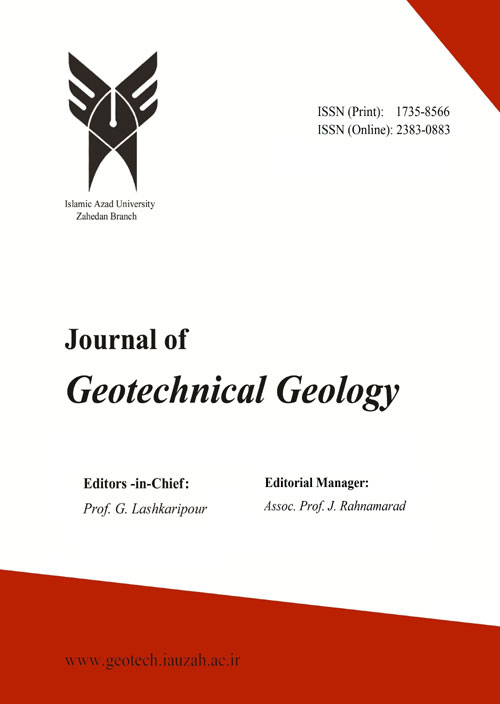Study of Soil Liquefaction Potential in the South of Urmia plain, reviewing the Japanese specifications for highway bridges 1999
Liquefaction is one of the main topics of seismic geotechnics. The effects of liquefaction on structures and installations during an earthquake can be very destructive. In the two earthquakes Alaska and Niigata Japan in 1964, spectacular examples of earthquake-induced failures, such as rupture of slopes, deformation of foundation in buildings and bridges, and the floating of buried structures a result of the flow of soil bed occurred. In liquefaction in general, soils tend to be denser when non-adherent, saturated and loose soils are exposed to earthquake vibrations. However, in certain granulation ranges, drainage is somewhat slow, as the rapid fluctuations in the soil due to lack of drainage will necessarily increase the pore pressure. Increasing pore water pressure results in a reduction in effective stress, which results in reduced shear resistance of the soil. Based on the relationship between the geostatic stresses in the soil, the increase in pore pressure may reduce the effective stress in the soil, which results in low or even zero shear strength and, consequently, Soil flows into fluid state, which is called liquefaction. In this research, we will study this phenomenon in the East of Urmia plain using the Japanese specifications for highway bridges 1999. The basis of this method is the evaluation of the liquefaction potential, by comparing the liquefaction resistance assessed from the soil SPT with the shear stress ratio induced by the earthquake to the normal effective stress from the earthquake. Of the 6 study boreholes, only one of the boreholes with high-liquefaction risk was evaluated. So the risk of liquefaction is very low. In general, the southern part of Urmia region requires more geotechnical studies due to the density of existing industries and roads, and also geophysical studies such as the use of shear waves.
- حق عضویت دریافتی صرف حمایت از نشریات عضو و نگهداری، تکمیل و توسعه مگیران میشود.
- پرداخت حق اشتراک و دانلود مقالات اجازه بازنشر آن در سایر رسانههای چاپی و دیجیتال را به کاربر نمیدهد.


